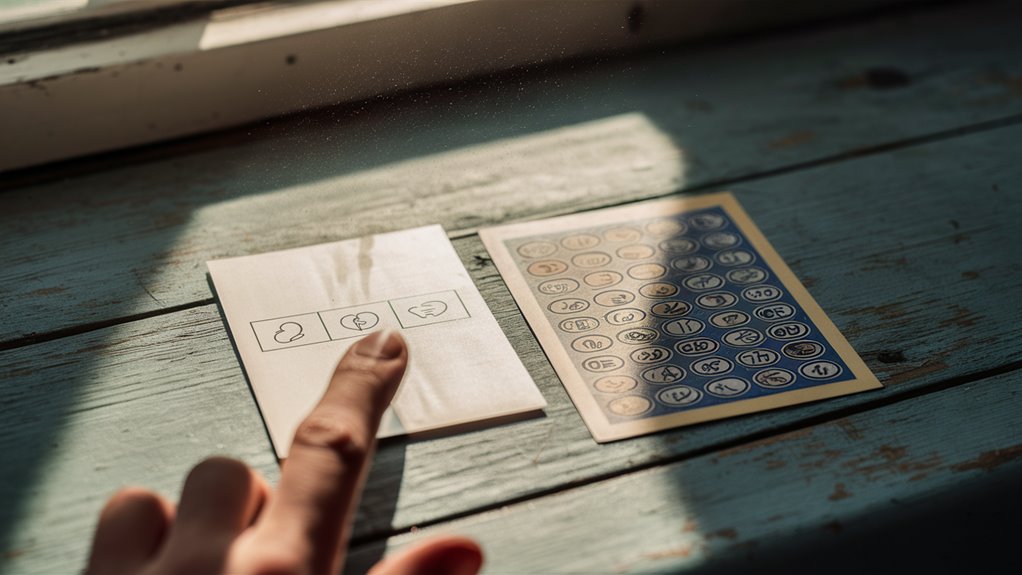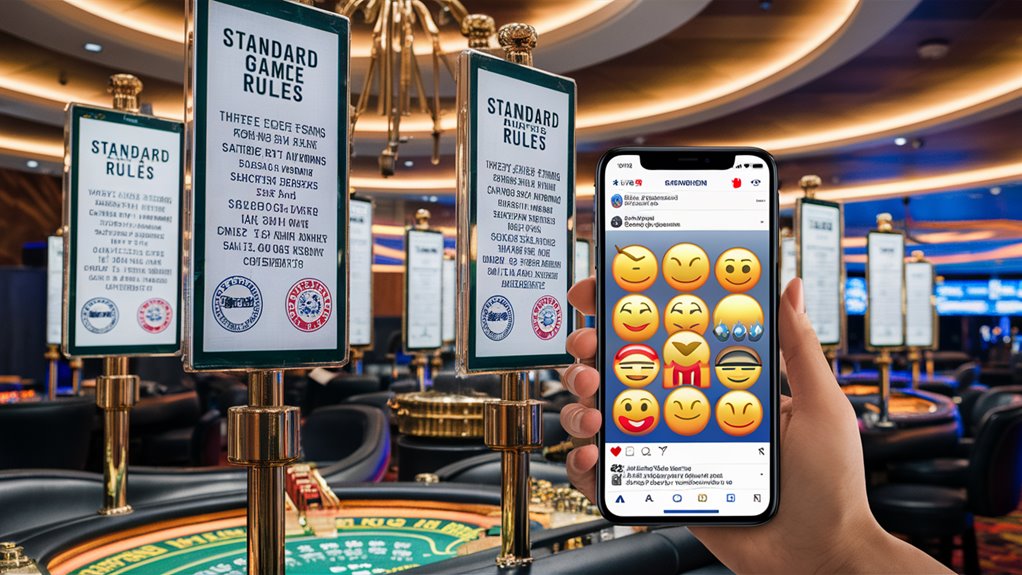
다층 화폐 환전 시스템

소셜 카지노 플랫폼은 복잡한 다단계 환전 구조를 통해 실제 화폐 가치를 숨깁니다.
수천 단위의 디지털 토큰 단위가 현실 달러와 직접 연결되지 않도록 설계됩니다.
이로 인해 플레이어는 지출 규모를 명확히 인식하기 어렵습니다.
환전 계층 구조
플레이어는 먼저 프리미엄 화폐를 구매합니다.
프리미엄 화폐는 다시 2차 화폐로 전환됩니다.
2차 화폐는 이벤트 토큰, VIP 포인트 등으로 재환전됩니다.
이중, 삼중 환전 과정을 거치며 인지적 부담이 커집니다.
인지적 장벽 형성
“2,500코인에 4.99달러” 같은 불규칙 환율은 혼란을 증폭시킵니다.
플레이어는 단순 비교가 불가능해집니다.
심리적 거리감이 증가하며 지출 저항감이 약화됩니다.
심리적 가격 책정 전술
가상 화폐 패키지에는 전략적 보너스 승수와 계층화된 보상이 포함됩니다.
수백만 단위 토큰 숫자가 현금 감각을 왜곡합니다.
플레이어는 숫자의 크기에 압도되어 실제 금액을 잊습니다.
프리미엄 번들 설계

최상위 번들은 가장 합리적인 선택처럼 포지셔닝됩니다.
취소선으로 표시된 ‘기존 가격’이 긴박감을 조성합니다.
“무료 보너스” 문구는 추가 가치를 부여합니다.
- 앵커링 가격 설정으로 비교 기준 왜곡
- 시간 제한 프로모션으로 인위적 희소성 창출
- 추가 보너스 콘텐츠로 혜택 과장
- 불규칙 단위 표시로 단순 비교 방해
소비자 행동에 미치는 영향
가상 화폐 시스템이 만든 심리적 거리는 지출 패턴을 근본적으로 변화시킵니다.
플레이어는 가격 민감도를 잃고 거래 빈도가 급증합니다.
결과적으로 전체 지출이 폭발적으로 증가합니다.
- 인지 부하 증가로 충동 구매 촉진
- 가치 평가 오류로 과잉 지출 발생
- 프리미엄 상품이 표준 구매 수준으로 인식
- 지속적 보너스 획득을 위한 반복 구매
가상 화폐 가격 책정 메커니즘
전략적 가격 구조
시각적으로 매력적인 칩, 금화, 보석 이미지가 구매욕을 자극합니다.
의도적으로 단위당 실 가격을 감추는 정교한 가격대를 적용합니다.
플레이어는 실제 비용을 정확히 계산하기 어렵습니다.
번들 가격 심리
“2,500코인에 4.99달러”와 같은 불규칙 단위를 사용합니다.
계층화된 가격대는 중간층을 하위로, 프리미엄을 상위로 강조합니다.
취소선 처리된 기존 가격이 긴박감을 부여합니다.
환전 구조와 플레이어 영향
50달러로 수백만 코인을 받으면 실제 지출이 흐려집니다.
프리미엄 화폐→게임 내 화폐로 이중 환전 시 인지가 더욱 멀어집니다.
심리적 장벽이 강화되어 지출 통제가 무너집니다.
주요 가상 화폐 특징
- 동적 가격대 최적화로 매번 다른 단위 제공
- 번들 크기로 단위당 비용 은폐
- 다중 환전 시스템으로 지출 감각 분절
- 프리미엄 패키지 인센티브로 가치를 과장
- 한정 시간 제안으로 구매 압박
복잡한 구매 구조 해독
다단계 구매 구조

플레이어는 복잡한 계층별 패키지를 선택해야 합니다.
각 단계마다 다른 보너스와 환율이 적용됩니다.
인지 부하가 극대화되어 단순 비교가 불가능합니다.
전략적 화폐 분절
기본 화폐, 이벤트 토큰, VIP 포인트 등으로 분절됩니다.
각 화폐마다 다른 가치를 부여해 혼란을 가중합니다.
플레이어는 실질 비용을 파악하지 못한 채 구매를 반복합니다.
고급 가격 심리
앵커링 효과가 중간층 패키지를 낮춰 보이게 만듭니다.
“최고 가치” 태그가 플레이어 판단을 압도합니다.
긴박감을 심어주는 승수 제공으로 즉각 행동을 유도합니다.
핵심 최적화 요소
- 가상 화폐 환전 계층 설계
- 프리미엄 패키지 시각 강조
- 보너스 승수 시스템 통합
- 한정 시간 프로모션 타이밍 조율
- VIP 보상 계층 추가
보너스 승수의 심리학
심리적 영향 이해
보너스 승수는 도파민 피드백 루프를 생성합니다.
플레이어는 승수 잠재력에 집중해 기본 가치를 무시합니다.
강렬한 기대감이 반복 참여를 부추깁니다.
변동 비율 보상과 행동
무작위로 등장하는 보너스 승수는 예측 불가능성을 강화합니다.
플레이어는 다음 승수를 기대하며 지속적으로 구매합니다.
변동 강화는 강력한 몰입 효과를 만듭니다.
시간 제한 보상과 의사결정
한정 시간 승수 이벤트는 FOMO를 유발합니다.
긴박감이 정상적 의사결정을 우회시킵니다.
즉각적 행동을 촉진해 충동 구매를 만든다。
주요 심리 요소
- 무작위 보상에 대한 도파민 반응
- 승수에 의한 가치 인식 왜곡
- 인위적 희소성이 불러오는 긴박감
- 변동 강화로 지속적 참여 유지
- 한정 시간 기회로 인한 FOMO
한정 시간 제안 이해하기
시간 제한 프로모션의 심리
희소성과 긴박감 원칙을 활용해 구매를 촉진합니다.
플레이어는 제한된 기회를 놓치지 않기 위해 행동합니다.
즉각적 충동을 자극해 지출을 가속화합니다。
전략적 시행 및 타이밍
코인 소진 시, 연패 직후, 몰입 최고 시점에 제안합니다.
구매 의향이 감지될 때 자동으로 알림을 보냅니다.
타이밍 최적화로 변환율을 극대화합니다。
심리적 유발 요소 및 디자인
카운트다운 타이머가 시간 압박을 부여합니다.
깜빡이는 애니메이션이 시선을 사로잡습니다.
한정 수량 표시로 희소성을 강조합니다。
데이터 기반 최적화
행동 트래킹으로 개인별 최적 오퍼를 생성합니다.
전환 최적화 알고리즘이 실시간으로 학습합니다.
세분화된 유저 그룹에 맞춘 동적 가격 모델을 적용합니다。
지출 패턴 및 플레이어 행동
FOMO와 지출 급증
한정 시간 제안은 계획된 한계를 무너뜨립니다.
FOMO는 지출 통제를 우회합니다.
급격한 지출 급증을 유발합니다。
구매 주기 분석
지출은 일관된 간격이 아닌 급등락 형태를 보입니다.
초보자는 소액부터 시작합니다.
몰입도가 상승할수록 지출 규모가 확대됩니다。
가치 인식 진화
반복 구매로 프리미엄 상품이 일상화됩니다.
손실 회복 시도가 등급 유지 거래를 강화합니다.
지각된 가치는 실제 비용을 넘어섭니다。
지출 행동 지표
- 프로모션 시기 급증하는 지출 사이클
- 점진적 구매 확대 패턴
- 가상 화폐 관리 의사결정 빈도
- 등급 유지용 거래 비중 증가
- 시간 압박에 따른 반응 속도
플레이어 경제학에 미치는 영향
플랫폼은 전략적 제안과 가치 조정을 통해 장기 지출 경로를 설계합니다.
지속적 매출 증대를 위한 구조가 구축됩니다.
책임 있는 소비 통제는 의도적으로 억제됩니다。
실제 비용 대 인식된 가치
가상 화폐 시스템의 심리
플레이어는 복잡한 환전과 가변 환율로 실제 지출을 과소평가합니다.
“4.99달러에 50,000코인”은 개별 베팅 비용 파악을 무력화합니다.
인지 격차가 수익 극대화에 활용됩니다。
전략적 화폐 제시 및 마케팅
“100,000+50,000 무료 코인” 문구가 주목도를 높입니다.
동일 가격의 단일 제시보다 더 큰 매력을 발휘합니다.
마케팅 문구가 가치 인식을 왜곡합니다。
지출 행동 패턴 이해
플레이어 인터뷰에서 코인 단위 지출 인식과 실제 지출 간 격차가 확인됩니다.
인지적 복잡성은 지출 인식 희석에 핵심적 역할을 합니다.
결과적으로 플랫폼 수익이 극대화됩니다。
결론 및 정책 제안
소셜 카지노 가상 화폐 전략은 심층적 심리 메커니즘을 활용합니다.
투명한 게임 환경 설계가 절실합니다.
책임 있는 도박 문화를 정착시켜야 합니다。
- 금융 문해력 강화 교육 제공
- 위험 신호 조기 탐지·개입 시스템 구축
- 공정성 보장 규제 모델 개발
- UI 최적화로 사용자 관리 도구 지원
- 독립적 모니터링 및 투명성 확보





